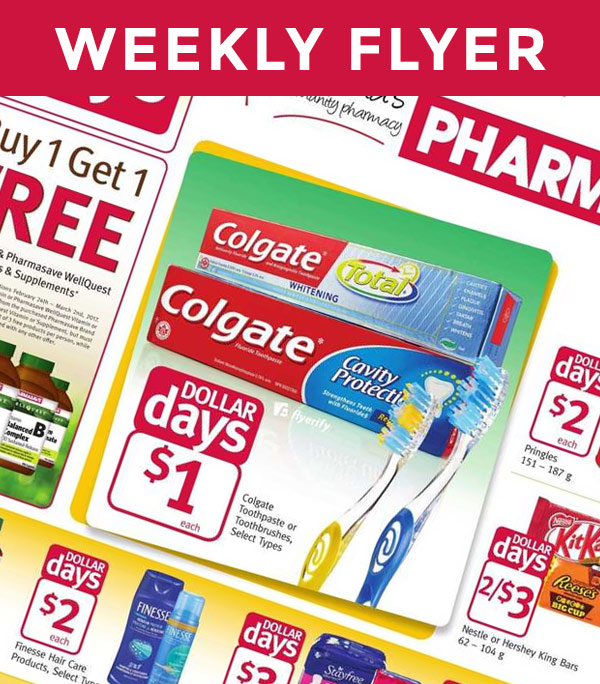
Pharmasave Port Coquitlam
Our Community Matters3295 Coast Meridian Road
Port Coquitlam, British Columbia
P: 604.942.9813 | F: 604.942.1561
100 - 2255 Elgin Ave
Port Coquitlam, British Columbia
P: 604.942.7117 | F: 604.942.4665
Palliative
Palliative Care is “the active total care of patients whose disease is not responsive to curative treatment.” The goal of palliative care is the achievement of the best possible quality of life for patients and their families.
Symptom Control involves therapies for nausea & vomiting, dry mouth & stomatitis, excessive pulmonary secretions/death rattle, radiation mucositis and proctitis, and wound care.
We work together with prescriber and patient to solve problems by customizing medications that meet the specific needs of each individual. Please contact our compounding pharmacist to discuss the dosage form, strength, and medication or combination that is most appropriate for your patient.
Anti-Emetics
Nausea & Vomiting
Persistent nausea can often be effectively controlled by using a combination of medications tailored to meet that individual’s specific needs. Dosage forms include transdermal gels, suppositories, lollipops, and more.
Promethazine is commonly compounded for topical or transdermal application to treat nausea, vomiting, and vertigo, but this preparation may be used as an antiemetic for cases ranging from chemotherapy to motion sickness. The dose is typically 25mg for adults, and the dose is decreased for children. The gel is applied to an area of soft skin, such as the inside of the wrist or arm, the side of the torso, or the inside of the thigh. For children, doses are often applied to the inside of one wrist, and then the wrists are rubbed together.
US Pharmacist, August 1999; 74-5
Lorazepam, diphenhydramine, haloperidol, and metoclopramide (known in combination as “ABHR”) have been prepared as a rectal suppository and in other transdermal dosage forms. The rationale is to use a variety of medications which target various pathways such as vagal nerve stimulation, the vomiting center, and the CTZ for more severe cases. Researchers at Memorial Sloan-Kettering Cancer Center have studied the antiemetic activity and safety of the antiemetic regimen of metoclopramide, dexamethasone, and diphenhydramine in patients receiving standard outpatient chemotherapy programs. Vomiting was prevented in over 70% of patients.
Cancer 1995 Sep 1;76(5):774-8
Oral combination antiemetics in patients with small cell lung cancer receiving cisplatin or cyclophosphamide plus doxorubicin.
Cleri LB, Kris MG, Tyson LB, Pisters KM, Clark RA, Gralla RJ
Department of Medicine, Memorial Sloan-Kettering Cancer Center, Cornell University Medical College, New York, New York 10021
The abstract of this article can be viewed online. Go to PubMed: www.ncbi.nlm.nih.gov/PubMed
In the search box, enter the following PMID: 8625179
Intranasal metoclopramide may significantly reduce the frequency of acute vomiting in patients receiving highly emetogenic chemotherapy, such cisplatin-induced delayed emesis. Intranasal metoclopramide caused minor irritation of the nasal membrane and unpleasant taste in some patients, but was otherwise well tolerated, with no report of serious extrapyramidal effects.
Drugs 1999 Aug;58(2):315-22; discussion 323-4
Intranasal metoclopramide.
Ormrod D, Goa KL.
Adis International Limited, Auckland, New Zealand. demail@adis.co.nz
The abstract of this article can be viewed online.
Go to PubMed: www.ncbi.nlm.nih.gov/PubMed
In the search box, enter the following PMID: 10473023
Dry Mouth
Dry Mouth & Stomatitis
There are many factors that can interfere with the ability to eat when a person is receiving chemotherapy. Malnutrition may result, yet it is often preventable. Our pharmacy can compound medications to help combat mouth tenderness and infections, which may enable patients to enjoy eating again.
Cancer. 2002 Nov 15;95(10):2230-6
Effect of topical morphine [mouthwash] for mucositis-associated pain following concomitant chemoradiotherapy for head and neck carcinoma.
Cerchietti LC, Navigante AH, Bonomi MR, Zaderajko MA, Menendez PR, Pogany CE, Roth BM.
Supportive Care Division, Department of Medical Oncology, Angel H. Roffo Cancer Institute, University of Buenos Aires, Buenos Aires, Argentina.
The abstract of this article can be viewed online.
Go to PubMed: www.ncbi.nlm.nih.gov/PubMed
In the search box, enter the following PMID: 12412178
A three-drug mouthwash (lidocaine, diphenhydramine and sodium bicarbonate in normal saline) can provide effective symptomatic relief in patients with chemotherapy-induced mucositis.
Support Care Cancer. 2000 Jan;8(1):55-8
Efficacy of treatment to relieve mucositis-induced discomfort.
Turhal NS, Erdal S, Karacay S.
Department of Medicine, Marmara University Hospital, Istanbul, Turkey.
The abstract of this article can be viewed online.
Go to PubMed: www.ncbi.nlm.nih.gov/PubMed
In the search box, enter the following PMID: 10650899
Loss of saliva (xerostomia) is one of the most common complaints among patients who have received radiation therapy of the head and neck. Xerostomia contributes to radiation-induced periodontal infection, dental caries, osteoradionecrosis, and poor digestion of carbohydrates. Ask us about sialogogues (saliva stimulants) in customized dosage forms.
The following article discusses the benefits of using pilocarpine in a sustained release dosage form to treat xerostomia.
Yakugaku Zasshi. 1997 Jan;117(1):59-64
[Preparation and evaluation of solid dispersions of pilocarpine hydrochloride for alleviation of xerostomia]
[Article in Japanese]
Oda M, Sato M, Yagi N, Ohno K, Miyazaki S, Watanabe S, Takada M.
Faculty of Pharmaceutical Sciences, Health Sciences University of Hokkaido, Japan.
The abstract of this article can be viewed online.
Go to PubMed: www.ncbi.nlm.nih.gov/PubMed
In the search box, enter the following PMID: 9120802
Anti-Secretory Agents
Excessive Secretions/Death Rattle
Transdermal Anticholinergics for the Treatment of “Death Rattle” and Excessive Secretions
Difficulty clearing upper airway secretions (death rattle) is a problem for half of all dying patients. Treatment often includes the use of anticholinergic drugs, such as scopolamine (also known as hyoscine) or atropine. Transdermal scopolamine has several indications for symptom control in patients with end-stage disease: control of excess salivary secretions, management of terminal secretions, and control of nausea.
Palliat Med. 2002 Sep;16(5):369-74
J Pain Symptom Manage. 2002 Apr;23(4):310-7
Prescrire Int. 2001 Aug;10(54):99-101
Otolaryngol Head Neck Surg. 1990 Oct;103(4):615-8
Reduction of salivary flow with transdermal scopolamine: a four-year experience.
Talmi YP, Finkelstein Y, Zohar Y.
Department of Otolaryngology, Hasharon Hospital, Golda Medical Center, Petah Tikvah, Israel.
The abstract of this article can be viewed online.
Go to PubMed: www.ncbi.nlm.nih.gov/PubMed
In the search box, enter the following PMID: 2123321
Drooling is a serious social handicap experienced by some neurologically impaired patients. No one method has been identified to control drooling for all patients, however, anticholinergic drugs have been utilized. In the following case study, transdermal scopolamine was found to be effective for controlling drooling in a traumatic brain-injured patient for whom more conservative methods failed. From a baseline saliva flow rate, saliva flow decreased up to 59%. No significant side effects were observed with treatment, and the decrease in drooling was maintained for a 4-month period. Although transdermal scopolamine may represent one acceptable facet of long-term treatment, it must be stressed that efficacy is variable across patient populations and that treatment approaches must be individualized.
Am J Phys Med Rehabil. 1991 Aug;70(4):220-2
The use of transdermal scopolamine to control drooling.
A case report.
Dreyfuss P, Vogel D, Walsh N.
Department of Rehabilitation Medicine, University of Texas Health Science Center, San Antonio 78284-7798.
The abstract of this article can be viewed online.
Go to PubMed: www.ncbi.nlm.nih.gov/PubMed
In the search box, enter the following PMID: 1878183
Radiation Proctitis
Radiation proctitis is a known complication of radiation therapy for prostate cancer. Commercially available treatments are often ineffective and have focused on relieving symptoms after damage has occurred, although options exist for prevention.
A prospective, randomized, placebo-controlled, double-blinded trial concluded that misoprostol rectal suppositories significantly reduce acute and chronic radiation proctitis symptoms in patients receiving radiation therapy for prostate cancer.
Am J Gastroenterol 2000 Aug;95(8):1961-6
A prospective randomized placebo-controlled double-blinded pilot study of misoprostol rectal suppositories in the prevention of acute and chronic radiation proctitis symptoms in prostate cancer patients.
Khan AM, Birk JW, Anderson JC, Georgsson M, Park TL, Smith CJ, Comer GM.
Department of Radiation Oncology, State University of New York Hospital at Stony Brook, 11794-8173, USA.
The abstract of this article can be viewed online.
Go to PubMed: www.ncbi.nlm.nih.gov/PubMed
In the search box, enter the following PMID: 10950043
Seven patients with radiation proctitis completed an open pilot study to evaluate the effectiveness of short chain fatty acid (SCFA) enemas. Four weeks of treatment resulted in clinical improvement in all patients, and modest changes in endoscopic and pathological parameters.
Am J Gastroenterol. 1996 Sep;91(9):1814-6
Evaluation of short-chain fatty acid enemas: treatment of radiation proctitis.
al-Sabbagh R, Sinicrope FA, Sellin JH, Shen Y, Roubein L.
Division of Gastroenterology, University of Texas Medical School, Houston, USA.
The abstract of this article can be viewed online.
Go to PubMed: www.ncbi.nlm.nih.gov/PubMed
In the search box, enter the following PMID: 8792704
Topical sucralfate may induce a lasting remission in a majority of patiets with moderate to severe rectal bleeding due to radiation proctosigmoiditis.
Dig Dis Sci 1999 May;44(5):973-8
Natural history of late radiation proctosigmoiditis treated with topical sucralfate suspension.
Kochhar R, Sriram PV, Sharma SC, Goel RC, Patel F
Department of Gastroenterology, Postgraduate Institute of Medical Education and Research, Chandigarh, India.
The abstract of this article can be viewed online.
Go to PubMed: www.ncbi.nlm.nih.gov/PubMed
In the search box, enter the following PMID: 10235606







